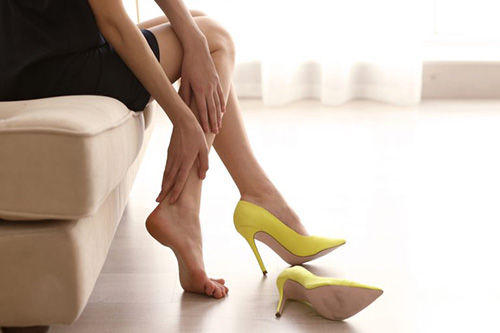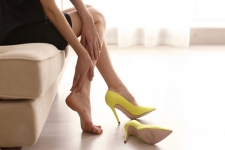Wearing high heels puts the feet at a rather unnatural angle which, in turn, pulls muscles and joints out of alignment, meaning that the painful effects of said footwear aren’t limited to what’s below the ankle. In fact, it’s not at all unusual for those who spend LOTS of time in heels to suffer from low back pain, neck pain, and even shoulder pain…all ailments that are a direct result of the fact that the shoes disrupt the natural form of the body.

How is that possible? Well, the plantar fascia – which is found on the bottom of the foot – is connected to the calf muscle. The calf muscle connects to the hamstring, which runs all the way up the back of the thigh and connects to the pelvis and, in turn, to the lower back. Combine all of the with the fact that walking in heels forces our center of gravity forward because we are, essentially, now walking on the balls of our feet. This shift forces the wearer of the heels to arch their back when standing, which can cause, contribute, or exacerbate back pain.
So, does this mean that you should never wear high heels? Not necessarily. What it does mean is that, at the bare minimum, you should vary your foot attire so that your feet and body aren’t always forced into the same position. If you want to wear heels one day, then opt for ballet flats the next. And, during non-dressy times, opt for shoes that won’t wreak havoc on your body, like athletic sneakers.
Other things to note about high heels are the slope of the shoe and the thickness of the heel. Shoes with a platform type sole can distribute your weight more evenly across the entire foot because they decrease the angle between the heel and the ball of the foot. Opting for shoes with a thicker heel also helps to spread out your weight more evenly, and they even provide a bit more stability (which can help decrease your risk of a sprained ankle!). And, finally, avoid shoes with narrow toe boxes that pinch and squeeze your toes into all sorts of unnatural positions! If pointy shoes are what you’re looking for, search for ones that narrow to a point AFTER the toe box…that way you’ll be able to have the look without paying the price (when it comes to foot pain, that is).

